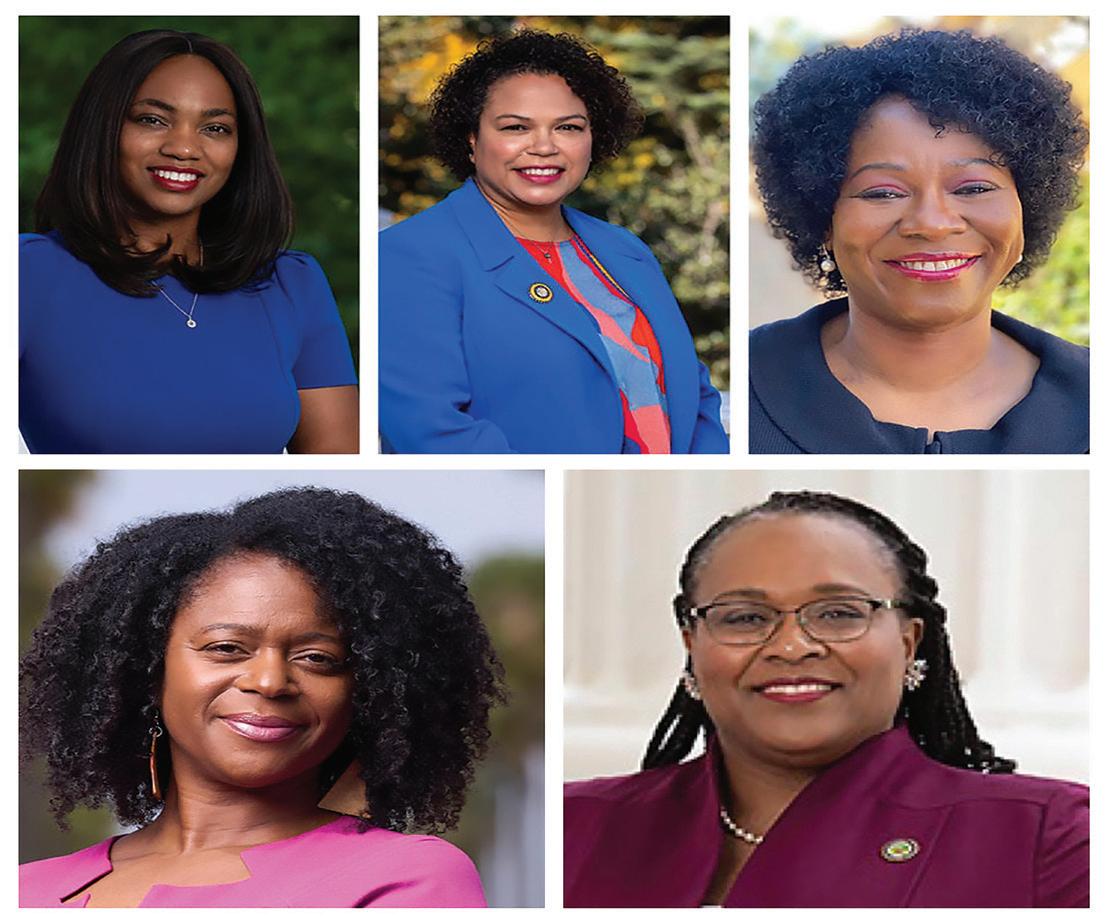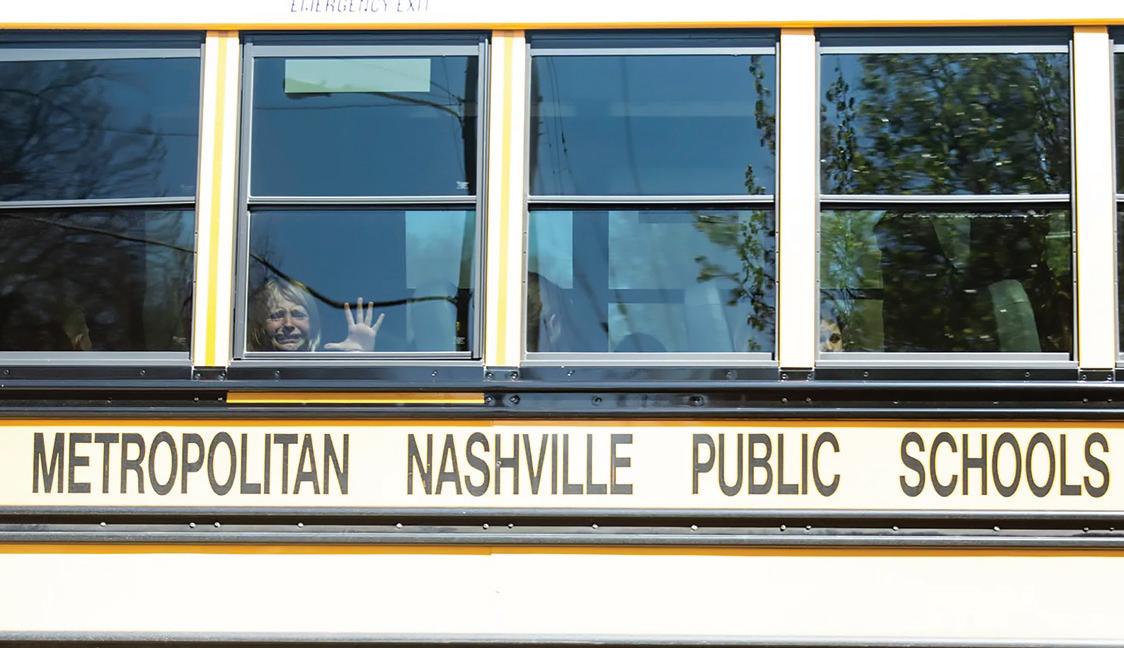
10 minute read
Reparations Task Force to Host Second Sacramento Meeting This Week
Antonio Ray Harvey | California Black Media
panel of five experts have been long awaited and would influence the final recommendations the task force makes in its proposal to the state by July 1.
Advertisement
According to the task force’s “preliminary draft report” the policies of the federal government and California have created obstacles that have prevented African Americans from achieving the same objectives as White Americans, while also perpetuating symbols of slavery that have aided in the accumulation of wealth by White Americans.
Wisconsin Race Reminds Us How Important Every Election Is...continued
his family wants more than reparations.
“The descendants of slaves want (government) contracts for 25 years in perpetuity,” Burgess told the task force. “We don’t just want the reparations.” thin margins. Wisconsin has 72 counties. If 140 more people in each one chooses to vote for the same candidate in the supreme court race, that’s one percentage point in the typical voter turnout in April. If more 500 people in each county go vote for that person, that’s nearly four points. And even with that boost in turnout, a majority of voters would still have stayed home.
Dawn Basciano, who testified in October 2021 about how Black families lost land in Coloma was in attendance but did not make public comment.
Basciano, a regulatory manager at the California Department of Public Health, is the great granddaughter of Pearly Monroe, the grandson of Nancy and Peter Gooch.
This election will pick the swing vote on the state’s Supreme Court, which is dominated by a far-right majority that’s ruled against everything from broad use of ballot drop boxes to make voting more convenient to the right of citizens’ groups to challenge environmental permits (the dissenting justices said that decision “slam shut the courthouse doors” to Wisconsinites).
The California's Task Force to Study and Develop Reparation
Proposals for African Americans will discuss how the wealth gap has affected Black Californians at its next two-day meeting in Sacramento on Friday, March 29, and Saturday, March 30, at the California Environmental Protection Agency (CalEPA) headquarters’ Byron Sher Auditorium.
The sessions will begin at 9 a.m. on both days.
At the previous meeting held in Sacramento March 4 and 5, several Black California families – legal heirs to land grabbed illegally or extralegally by the state through eminent domain – shared stories or how their families were forcefully removed from property they owned without compensation.
Michael Johnson and his sister Marian Johnson told the task force how his grandparents and great grandparents were removed from Russell City by eminent domain. Russell City was an unincorporated majority Black community in Northern California that local authorities bulldozed in the 1960s.
“Let’s call it what it is, ‘stealing land from Black people,’” said Michael Johnson, a member of the Russell City Reparative Justice Project. “Russell City holds the answers to questions that California reparations committee has on how to quantify the harm caused by the unjust property taken by eminent domain.”
This upcoming meeting in Sacramento, which is the 14th for the task force, will feature analysis by a team of economic experts who will propose a framework for calculating restitution owed to Californians who are the descendants of Black people enslaved in the United States and make recommendations for how the state can offer that restitution.
The recommendations by a
Newsom Outlines Vision for California, Pledging to Permanently Eradicate Homelessness...
continued from page 3 billion in grants is part of a multi-year $15.3 billion effort by the state to address the crisis of homelessness.
Funds will go to entities that are “ambitious” in their goals, with improved metrics and coordination. “We rejected many plans that were unambitious,” said Newsom, adding: “no plan, no money.”
Bonuses of up to 16% will be attached for cities and counties who meet their target metrics. An additional $750 million has been allocated to clean up homeless encampments.
Tiny Homes Newsom also announced a “small homes” initiative, tiny units which would house 2 to 6 people. 1200 small homes will be placed this year in Los Angeles, San Diego County, San Jose and Sacramento. People living in homeless encampments will be first priority for housing in the tiny homes, as the first step to transitioning into permanent housing.
Newsom said he hopes to launch the initiative in other cities next year. The homes are offered free, and ready to move in to.
Through these initiatives, the state is expected to reduce its homeless population by 15% by 2025. The Public Policy Institute of California notes that the state has the largest number of unhoused people in the country: more than 131,000 people are unsheltered, according to the 2022 annual Point In Time survey, in which volunteers go out on to streets to count the number of homeless residents.
Project HomeKey
Los Angeles is home to 38% of the state’s homeless residents. San Jose, one of the wealthiest regions in California, is home to 5.8% of the state’s unhoused people, while Oakland is home to 5.7%. San Francisco has 4.5% of the state’s unhoused individuals,
Elmer Fonza of Las Vegas and his elder brother Medford Fonza, who lives in the Los Angeles area, said their great, great, great grandfather Nelson Bell was brought to California as an enslaved person around 1850 to mine gold. He was later freed.
Bell purchased land in Coloma, 48 miles east of Sacramento, but the family lost it all after he died in the 1870s. The Fonzas believe their family property was taken by wrongful state actions.
The Fonzas are not the only family tied to Nelson Bell. Sacramento residents and twin brothers, Jonathan and Matthew Burgess, are descendants of Bell. The brothers, who met the Fonzas at the meeting for the first time, have been doing research to determine how Bell’s land was taken through eminent domain.
Jonathan Burgess said his “family got deeds and receipts that go back from 1870” that proves Bell owned land in what is now considered Gold Country. The town of Coloma is mostly a state park run by the state’s parks and recreation department.
Matthew Burgess said
The Gooches were enslaved and brought to California to mine for gold in Coloma in 1849. When California became a state in 1850, they were freed and acquired nearly 400 acres in Coloma. They paid for the freedom of their son Andrew Monroe in Missouri, who joined them in Coloma in the 1870s.
Basciano said most of the Gooch-Monroe land was forcefully taken by the state after a long court battle in the 1940s. Members of the Monroe family say their case is welldocumented and their land has been a major part of the state’s park and recreation historical activities, mainly because of the fruit orchards the Black family owned.
“Unfortunately, most of it was taken by eminent domain,” Basciano told Emend the Mass Media Group later in March. “Essentially, (Coloma) was owned primarily by two prominent Black families (Gooch-Monroe and Burgess). What is there, today, is not in the
Newsom Outlines Vision for California, Pledging to Permanently Eradicate Homelessness...continued
residents.
according to PPIC data.
Amid the pandemic, Newsom had launched Project HomeKey, an ambitious project to buy up hotels, motels, and other properties to be repurposed as housing for homeless people, with support services to address substance abuse, mental illness, and economic distress. In response to a question from Ethnic Media Services, the governor said: “I couldn’t be more proud of the program, especially with our rural partners who have developed some really innovative solutions with Project HomeKey funding.”
Newsom noted that Project HomeKey bought 6,000 units at a cost of $3.75 billion. Critics of the program noted it cost an average of $55,000 to house an individual, and did not address the underlying issues leading to chronic homelessness.
‘Crisis of Housing’
In response to a question from California Black Media, Newsom said he was tightening up the permitting process for Accessory Dwelling Units to increase the supply of affordable housing, with $100 million having been allocated to homeowners to apply for grants to build ADUs on their property.
“In California, we are using every tool in our toolbox –including the largest-ever deployment of small homes in the state – to move people off the streets and into housing. The crisis of homelessness will never be solved without first solving the crisis of housing – the two issues are inextricably linked,” said Newsom.
Insulin Manufacturing
The governor also announced that the state would be producing its own insulin to be distributed at $30 per vial, greatly reducing the cost of a drug that is needed daily by 3 million of the state’s
Diabetes disproportionately affects people of color, along with low-income individuals, said Dr. Mark Ghaly, Secretary of California Health and Human Services. “We know the cost of insulin is forcing families to make hard choices,” he said at the March 22 briefing.
The state has partnered with Utah-based Civica to manufacture insulin. Newsom said he hopes to begin manufacturing insulin in California by 2025.
Opioid Crisis
The governor is also shoring up his response to the state’s mental health and opioid crises. He announced a 2024 ballot initiative, which would provide $1 billion annually to increase the supply of beds for mentally ill people, especially veterans.
Earlier in the week, Newsom released his administration’s
“Master Plan for Tackling the Fentanyl and Opioid Crisis,” which would step up efforts to seize fentanyl, support overdose prevention efforts, hold the opioid pharmaceutical industry accountable, crack down on drug trafficking, and raise awareness about the dangers of opioids.
Newsom also discussed the state’s shutdown of four private prisons. “It is absolutely perverse that we have profit motives for incarcerating our citizens,” he stated. The state’s prison population has dropped dramatically, from a high of almost 200,000 prisoners during the Schwarzenegger era, to about 93,000 currently.
San Quentin is also being repurposed as a rehabilitation facility to allow prisoners to more successfully integrate into society once released, thereby reducing the state’s rate of recidivism.
Wisconsin Race Reminds Us How Important Every Election Is
By Ben Jealous
and wind energy, emissions and fossil fuel extraction would drop precipitously.
It’s the paradox of the aggregate. One of us doing something has a minimal impact, a lot of us doing the same thing moves the needle – for the good or the bad.
The Wisconsin race may even decide the next Presidential election. Those justices may well be called on in 2024 to rule on election challenges in a state whose 10 electoral votes have decided presidential elections. It happened that way in 2020, and the conservative in this year’s race advised the national and state Republican parties and those who sought to submit fake paperwork for Donald Trump electors after he lost the 2020 race. A few more people stepping up to vote could decide this race. Statewide contests in the Dairy State often turn on razor
So Wisconsin voters can do a lot to save the country and protect the planet if they cast their ballots. Judging by past races, most Wisconsinites plan to skip this election. The rest of us can do something by texting anyone we know in Wisconsin to let them know how important this election may be. Their State Supreme Court may end up deciding the next President.
Ben Jealous is executive director of the Sierra Club. He is a professor of practice at the University of Pennsylvania and author of “Never Forget Our People Were Always Free,” published in January.

Conservative Groups Don’t Speak for All Moms
By Svante Myrick
rights – not just my own. Mom also worked multiple jobs to support our family through some very hard times. She represents my ideal of what a mother should be, without a doubt. And maybe she would represent yours too, or my neighbor’s. I certainly think so – but the truth is I can’t say for sure, and I can’t insist on it.
Svante Myrick, President, People

For the American Way
As Women’s History Month comes to a close, I’ve been thinking about moms and honoring motherhood. I’ve written before about how my mom instilled values in me, including respect for everyone’s
Unfortunately, that is exactly what some on the Right are trying to do by claiming to speak for all mothers and even all parents. This effort to steal the moral authority of motherhood only for themselves is wrong, and it has to be stopped.
The far-right group Moms for Liberty is a marquee example with an especially insidious
Reparations Task Force to Host Second Sacramento Meeting This Week...continued hands of any of those families.”
Eminent domain’s historical application by the government and its impact on racial wealth disparity have been passionately discussed at the reparations task force gatherings. In the 1950s, for example, the city of Santa Monica utilized an unlawful approach to confiscate land, causing thousands of families to be evicted from their homes. The move was to pave the way for the Interstate 10 freeway and the city’s Civic Auditorium. Most of the Black families that were living in the Belmar Triangle, a community in downtown Santa Monica, migrated to the beach town from the deep south. They occupied the area for nearly 50 years.
Extensive research of the historical Belmar district has been conducted by Dr. Alison Rose Jefferson, the author of “Living the California Dream: African American Leisure Sites She believes that many of the families who were displaced are eligible for compensation.
“Yes, I do think there should be some reparations for those who were forcefully removed,” Dr. Jefferson said in October 2022. For more information about the Task Force meeting, please visit the California Department of Justice (DOJ) website or contact the DOJ by email at ReparationsTaskforce@doj. ca.gov or phone at (213) 5190504.
Ben Jealous
Whether it’s protecting the planet or preserving our democracy, it can seem at times that our individual actions fall short against the biggest challenges. Let me tell you why that isn’t true.
We tend to overlook that issues like these arise in the first place because of the sum of a lot of individual actions. If one by one, half of us switched to powering our homes and cars with solar
Voting is no different. I’ve spent a good part of my career fighting to ensure people can vote and encouraging them to get out and do it.
Next week, on April 4, Wisconsin will hold a spring election, mainly for local races. It’s the kind of election that historically voters across the country skip. Voter turnout in the Wisconsin primaries last month was 21 percent, and that was a four-point improvement. Badger State voters should see this election differently. continued in next 2 columns






